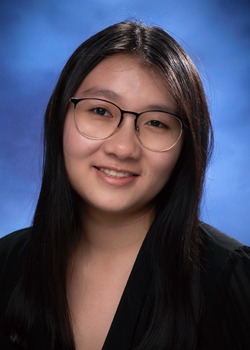
The phrase, “out-of-this-world” has taken on a whole new meaning for Ashley Kaya. The Kalani High School senior is interested in searching for signs of an Earth-like planet within Perseus, a constellation that looks like a hunter in the northern sky.
Guided by mentors at the University of Hawaiʻi Institute for Astronomy (IfA), Kaya’s ambitious proposal captured the attention of Maunakea Scholars, an innovative program designed to award local students observing time on world-class telescopes. The Oʻahu native now has the opportunity to use the Las Cumbres Observatory, which has facilities on Haleakalā and around the world, to conduct astronomical research for her project, “Determining the Habitable Zone of Algol.” That zone lies within the region of Perseus’ brightest star.
“Although my future career path isn’t necessarily catered towards astronomy, I am very interested in learning about different STEM subjects,” Kaya said. “I’m really fortunate to have the opportunity to participate in the program and receive telescope time, and I am excited to see where my project will lead.”
A committee of professional astronomers awarded Kaya’s habitable zone project top honors out of five student proposals from Kalani High School Fellow students Kyla Lee and Jing Zheng received honorable mentions. Mentors from IfA work alongside local high school students to help analyze data and prepare professional-style research proposals.
- Related UH News story: Future UH Mānoa students earn telescope time through Maunakea Scholars, April 30, 2019
“They think differently than people who have been in the field for a long time, and there are fewer bounds on their imagination,” said IfA mentor Casey Brinkman. “I am always impressed and have so much fun reading their ideas, and helping shape them into something that can be achieved with observations.”
“The students at Kalani High School put together incredibly ambitious and creative programs this year,” said Mary Beth Laychak, Canada-France-Hawaiʻi Telescope outreach program manager. “They wanted to study the black hole in the center of our galaxy, search for life on other planets, and delve into the mechanisms that cause the shape of galaxies. And they’re all attending class from home, which makes their dedication and efforts even more special this year.”
As Kaya continues to scan the sky, her sights are also set on microbiology. She isn’t certain where she will spend the next four years focusing on that realm of scientific study but is grateful for this exceptional opportunity to dive into what lies among the stars.
This outreach is an example of UH Mānoa’s goal of Excellence in Research: Advancing the Research and Creative Work Enterprise (PDF), one of four goals identified in the 2015–25 Strategic Plan (PDF), updated in December 2020.

